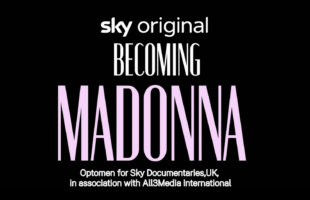Q: SES made an appearance at MIPTV in Cannes this April, which is not a usual gathering place for the satellite communications industry. Why MIPTV?
A: We believe that, as a global leader in Direct-to-Home satellite TV, we have a significant role to play in helping to drive the entire broadcast ecosystem forward.
While some building blocks to deliver Ultra HD content to the audience are present today, others still need to be developed before Ultra HD will become viable commercially. First the definition of an Ultra HD broadcasting format needs to be finalised and adopted by the industry. Second, the equipment at both ends of the satellite broadcasting path have to become available in the market. But technology isn’t all! More importantly, we need content to take off in a big way as well. This is why our key focus at MIPTV 2013 was the launch of the “SES Ultra HD Experience”: an initiative inviting content providers and broadcasters to work with SES to support the development of the Ultra HD value chain.
Q: While 4K TV sets are now being marketed (at the recent CES), content has yet to catch up. Is now the time to discuss 4K transmission capabilities?
A: The time to talk about Ultra HD transmission capabilities is now – in fact, there are a number of operators and broadcasters that have voiced their interest in launching an Ultra HD TV channel in the 2015/2016 time frame.
According to a survey conducted by HIS ScreenDigest, the Ultra HD content ecosystem is already on its way to being established. As of year-end 2012, there were 150 films and TV shows which have a 4K master copy, and can thus be distributed in Ultra HD immediately. There are an additional 793 films and TV shows which have been captured in 4K source format and would need to be rendered again for Ultra HD distribution. The forecast for 2013 is even higher and we do not expect this trend of original shooting in 4K to slow down with time.
However, besides movies, original Ultra HD productions are still rare. Several broadcasters have started to shoot in Ultra HD resolution, although they might only broadcast in HD. Beyond the increased resolution, broadcasters are realising there are other advantages to Ultra HD such as the wider lens angle to re-frame and get incredible close-up footage. All the signs point to an acceleration in the timeframe for Ultra HD commercialisation and we want to be ready for when it becomes a commercial reality and create the conditions for the successful introduction of Ultra HD for consumers. This is why we also partnered with Harmonic and Broadcom Corporation to pioneer the first Ultra HD transmission in the new High Efficiency Video Coding (HEVC) standard live from an SES satellite in mid-April. HEVC will improve compression standards for Ultra HD, significantly allowing broadcasters to benefit from more favourable economics to transmit in Ultra HD.
Q: What might SES do to encourage greater confidence among the production community/ broadcasters to start producing shooting in 4K?
A: At SES, we play a catalytic role in bringing all stakeholders together to work on the future of the satellite broadcasting industry.
Ultimately, the confidence among the production community and broadcasters to move towards Ultra HD production and distribution will come from the consumer market demand. What we can do best, as an infrastructure operator, is to work along with the industry to develop the required ecosystem, so as to create an end-to-end Ultra HD value chain and to enable consumers to experience Ultra HD television as early as possible in real market conditions, such as broadcast via our demo channels.
To illustrate the first point, let me showcase a concrete action we undertake every year. We organise an event called Industry Days where industry partners are invited to discuss and shape industry trends. These discussions can centre on topics such as the evolution of content consumption patterns and how satellite and OTT evolve on that respect or even address how to develop new technologies such as Ultra HD. These events jumpstart the conversations that take these technologies forward. As a neutral partner, we also recently invited broadcasters and content providers to participate in the “SES Ultra HD Experience” to test the entire Ultra HD value chain with us.
Q: SES’ Ultra HD transmission out of Luxembourg – can you describe this and what the transmission means for the 4K business moving forward? How soon will we expect to see Ultra HD receivers?
A: Ultra HD basically requires about four times the bandwidth of HD in the current encoding standard MPEG-2, as the resolution of Ultra HD is four times the resolution of HD. This is why we pioneered the first Ultra HD transmission in the new HEVC standard live from an SES satellite in April. With an Ultra HD transmission out of Luxembourg, we showcased a set-up that we believe will be the market standard. With this new HEVC standard, an Ultra HD channel will have a data rate of about 20 – 25 Mbit/s. We are convinced that the HEVC standard will become the choice for TV operators broadcasting Ultra HD content and expect the industry to develop prototype Ultra HD receivers in the coming months.
Q: With increased resolution comes increased bandwidth required – how is SES resolving this with HEVC technology?
A: HD is growing across the board; there are more than 5,600 satellite HD channels worldwide now, of which 28% are broadcast on SES satellites. With this demand comes a growing appetite for Ultra HD broadcast, which we are ready and willing to accommodate, thanks to the large bandwidth available on our satellites. Economically, this allows broadcasters and pay TV operators to position Ultra HD content as a premium market product. Ultra HD will become increasingly affordable for broadcasters just like how premium quality HD is affordable for broadcasters today. Ultra HD will then gradually become the standard on prime TV channels, while HD becomes the standard for the rest.








